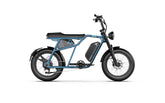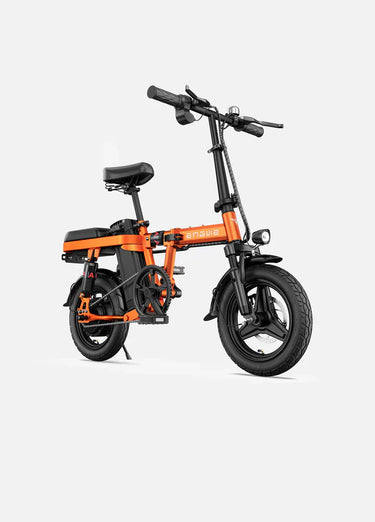Important Elements Of An Electric Bike
Introduction:
Bicycles are one of the most often used modes of transportation since they are easy, practical, affordable, and inexpensive. But not everyone will enjoy them. Elderly or disabled people may find them impossible to manage because they might be difficult to ride up and down hills or with big loads. A new generation of electric bikes has started to transform our conception of sustainable transportation in recent years.
These modern bikes combine all the comfort of automobiles with the straightforward economics of standard cycles. Let's examine their operation in more detail.
The Electric Bike's Fundamental Idea:
Concept of an electric bike in the form of a bicycle attached to a battery. You already have an electric-powered bicycle if your lights are dynamo-powered. Think about how the wheels turn when you repeatedly pump your legs on the pedals.
Your back safety lamp is kept lit in the dark by a modest current of electricity produced by a small dynamo (generator) positioned on the rear tyre. Imagine that you could reverse this procedure.
What if the lamp was taken out and a big battery was put in its place? The dynamo was driven in reverse by a continuous electric current that the battery discharged, making it spin like an electric motor. Without your assistance, the bike would move forward as the dynamo or engine rotated the tyre. An electric bike, Although it might seem a little unbelievable, this is really how electric bikes function.
Important elements of an electric bike
An electric bike is made up of four essential components: batteries, motor, a robust frame and spokes, and brakes.
-
Batteries
Large battery packs that are often located anywhere on the frame between the wheels give away electric bicycles. The battery is installed vertically next to the seat tube (the vertical portion of the frame in front of the back wheel).
The bike's batteries hold all of the energy necessary to propel you forward if you don't pedal at all, making them its most crucial component. An electric toaster requires about a quarter as much power as a typical electric bike battery, which produces about 350–500 W (or 35–50 volts and 10 amps).
-
Electrical Motor
The back wheel of the purely theoretical electric bicycle would be driven directly by the dynamo/motor by applying pressure to the tyre. The majority of electric bikes operate differently. In the hub of the back or front wheel are little electric motors (or mounted in the center of the bike and connected to the pedal sprocket). If you look at an electric bike's hub, you'll probably notice that it is considerably larger and bulkier than one on a regular bike. Check cycle to work scheme
-
Sealed Lead Acid (SLA)
When electric scooters and bicycles first became popular, these batteries were the norm. Electric motorcycles, which frequently require human input, have chosen newer battery technologies to keep the bike as light as feasible whereas the majority of electric scooters still use SLA batteries today.
-
The controller
You can control the electric assistance on your electric bike thanks to the controller, which is a crucial component of how they work and comes in a variety of shapes. The two main categories of controllers are pedal- and throttle-operated devices.
Electric assistance is provided via pedal-activated systems as you depress the pedals. Simple pedaling will do the same thing as using the throttle. The level of help you receive while you pedal can be changed using a controller positioned on the handlebar of electric bikes with pedal-activated systems. From no aid to a lot of support, you can dial in the level of assistance you desire.
-
Frame
An electric bike requires a slightly altered frame as well. The primary component of the frame, which bears your weight, is typically made of lightweight aluminum alloy; the lighter the frame, the lighter the bike as a whole, and the farther you can ride it before needing to recharge the batteries. The spokes on the wheel must also be more durable than those on a conventional bicycle, which have thin spokes. This is because if the spokes were merely conventional, lightweight ones, the wheel's electric motor in the hub would spin it with a lot of turning power, which may cause the spokes to buckle or bend (known as torque).
-
Brakes
Regenerative braking is a clever technique that some electric scooters claim to employ. The electric motor in the hub rotates backward when you start pedaling or decelerate, which begins the process of charging the batteries. Regenerative braking on an electric bicycle is not nearly as useful as it is on an electric train or vehicle.
An electric bike never gains (or loses) anything close to as much kinetic energy when it begins and stops since it has significantly less mass and velocity than a train or a car. You'd have to go down an awful lot of hills to charge up the batteries completely and that's practically not possible.
-
A Sensor
To keep them from moving too quickly, electric bikes have sensors that monitor your speed and signal the engine when to turn the throttle or the pedal assistance on or off. The sensors could detect torque or speed. But both exhibit similar behaviors. Your speed is monitored by the speed sensor. However, a torque sensor tracks your pedaling pressure because faster speeds are associated with harder pedaling. Check bike to work scheme







